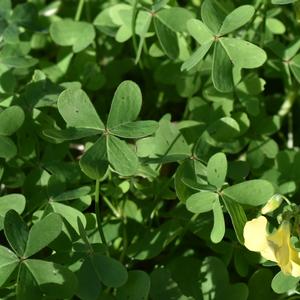20 April 2022
We start again to know more about some alien plants present on the Ponziane Islands with some ad hoc sheets (the last one was about Ailanthus) prepared by our botanists of the Department of Environmental Biology of the Sapienza - University of Rome.
The first of these species is also invasive and has a wide distribution in ruderal and agricultural environments: Oxalis pes -caprae.
Oxalis pes -caprae (called Buttercup oxalis or Bermuda buttercup) is a perennial herb native to South Africa that was introduced in the Mediterranean as ornamental and cultivated in Sicily since 1796.
The species has un underground perennial bulb, which in autumn emits an annual subterranean stem bearing a rosette of trifoliate leaves at soil level. Petioles then develop up to 20 cm. The inflorescence, at the top of a long leafless stem, gathers 5-19 flowers with a yellow corolla of five fused petals. Flowering is from November to May.
Oxalis pes-caprae largely reproduces vegetatively and the fruit (a short capsule) forms rarely. In spring the subterranean bulb bears small bulbs (bulbils) that germinate and form new plants in autumn.
The copious production of bulbils over the years enables the plant to spread and cover large areas. Movement of ground caused by man and animals favours the dispersal of bulbils. The species is especially difficult to eradicate, as mechanical removal can leave some of the bulbils behind and even facilitate their dispersal.
In the Mediterranean Basin, the plant is widely spread in ruderal areas and uncultivated land and is an important weed in olive groves and vineyards. Dense populations can inhibit the seed germination of other herbaceous plants, causing the decrease of crop yields and threatening the conservation of plants that might be indicators of traditional agricultural. The leaves contain high amount of oxalic acid which is toxic to livestock. This may have serious impacts where livestock is an important source of income.
In Italy Oxalis pes-caprae is invasive over a significant part of the peninsula (Liguria, Toscana, Marche, Abruzzo, Lazio, Campania, Puglia) and the main islands, naturalized in the other regions.
In the Ponziane islands the species is found in ruderal areas and agricultural land. In Ventotene. it is widespread in the internal areas between Punta Eolo, Parata Grande and Punta Pascone, where sometimes enters the small patches of maquis. It is also widespread in Palmarola (along the path from Cala del Porto) and in Ponza.
